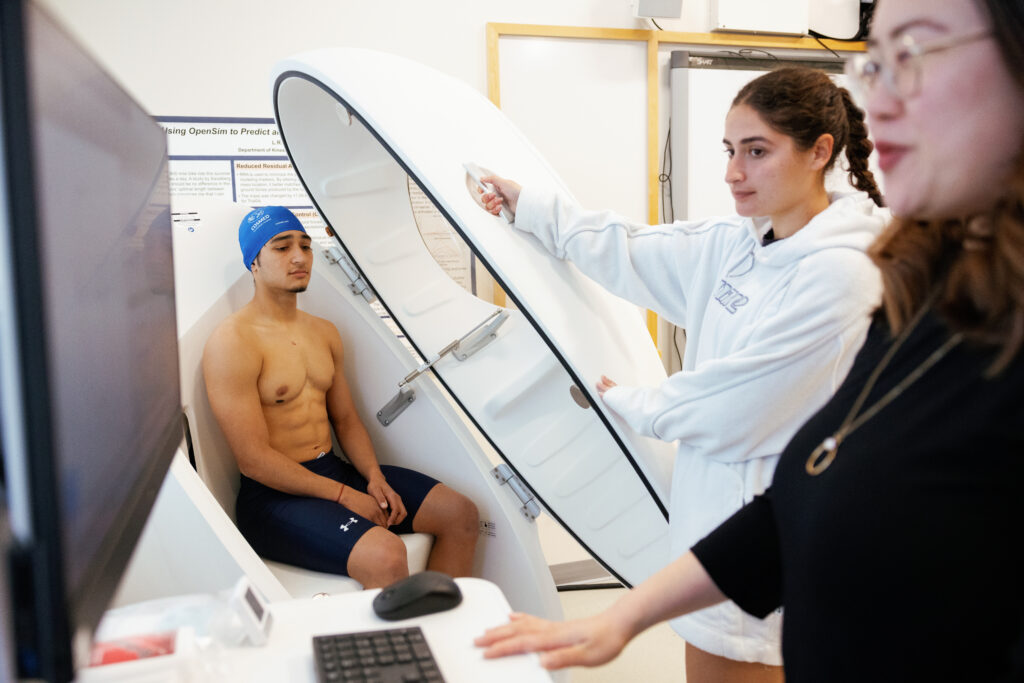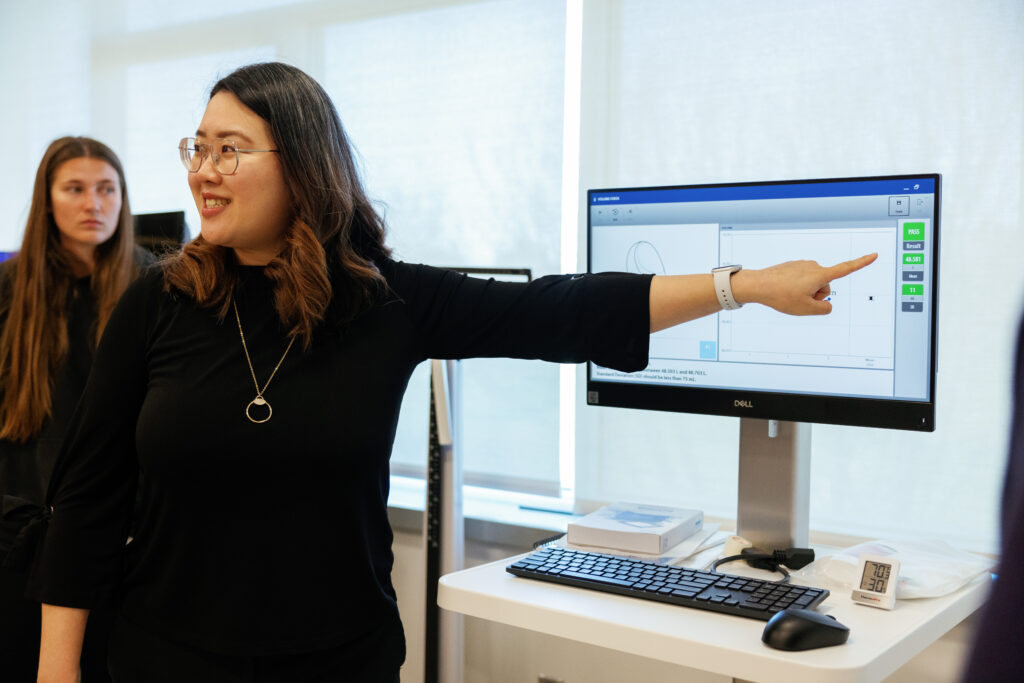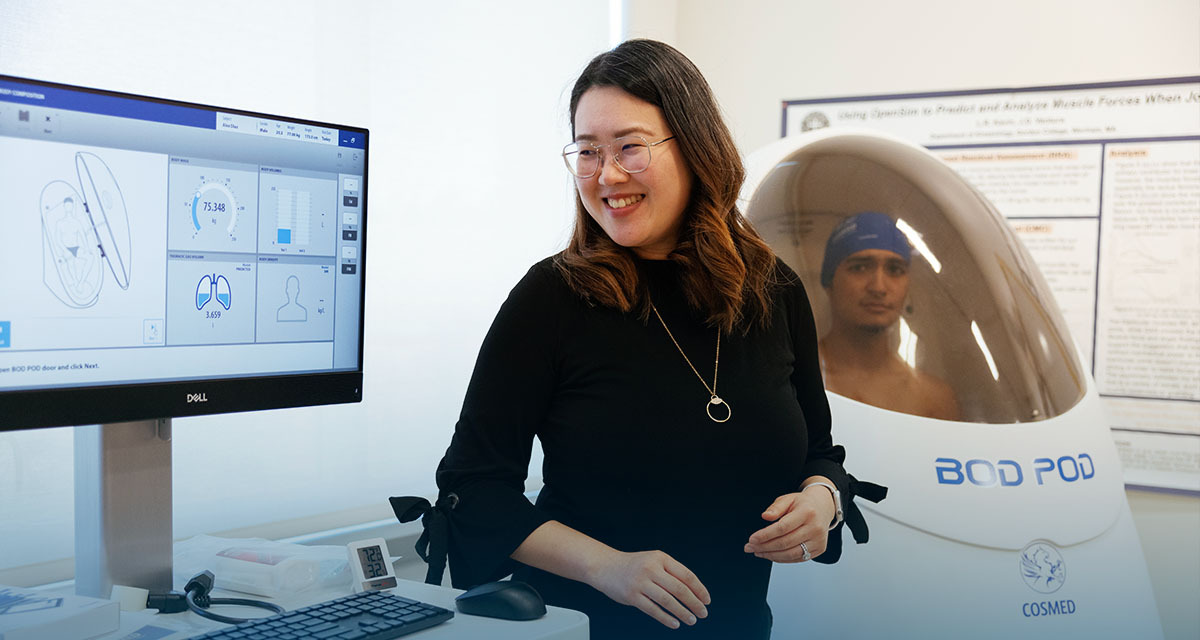Gordon College’s Bod Pod: Dr. Yi Sun on the Latest Technology in Body Composition
From keto diets to cortisol levels, Pilates to barre classes, there have never been more options for pursuing health and fitness. But when it comes to determining a person’s true physical health, finding concrete ways of accurately measuring body composition is more elusive. Do we only measure the person’s height and weight? Do we measure body fat? What about their muscle or bone density?
To help answer these questions, Gordon College houses a piece of equipment called the “Bod Pod” that uses air-displacement plethysmography to accurately determine a person’s body composition of body fat and fat-free mass to see if they are overweight or at risk for certain diseases. Dr. Yi Sun (kinesiology) regularly uses the Bod Pod in her classes as well as in her research, which has involved many individuals from the local community.
How Does a Bod Pod Work?

Over the years scientists have developed different methods to measure a person’s physical health. Perhaps the most common is the body mass index (BMI), which only includes a person’s weight and their height. However, this doesn’t provide a percentage of body fat. Other methods include waist circumference, dual-energy x-ray absorptiometry and skinfold measurements, but these measurements each have their own disadvantages and inaccuracies.
For a while, the most accurate form of body mass composition testing was hydrostatic body fat testing, in which a person was submerged in water and the displacement of liquid was measured to determine body fat and mass, using Archimedes’ Principle. However, this method was extremely costly and difficult to use for people who can’t swim. The Bod Pod uses air-displacement plethysmography, measuring the displacement of air instead of water, and can get within 0.001% accuracy.
Sun starts by using weights to calibrate the machine in a contained room so the air flow isn’t disrupted. Then the door to the Bod Pod opens, the patient sits inside for a minute as the machine measures the air displacement and then they get out. Though it’s not roomy, the Bod Pod is not claustrophobic either, and within a couple minutes the analytics are ready, measuring the patient’s weight, body fat, muscle mass and other helpful results. “It’s a much more user-friendly method of body composition measurement, for the patient and the administrator,” Sun says.
Why It’s Helpful

The more accurate data doctors and scientists can gather about the human body, the more they can learn about how to help patients stay healthy or fight certain diseases. A few years ago Sun used the bod pod for research in collaboration with Gordon’s Center for Balance, Mobility and Wellness. Several elderly individuals with hypertension from the local community came in to be tested with the Bod Pod and other physical and cognitive tests.
“When people get older, they tend to lose muscle and strength, in a process termed ‘sarcopenia,’” Sun says. “Exercise is good way to prevent muscle loss and help control high blood pressure. Some people were taking three or four drugs already, yet they still weren’t able to get their high blood pressure controlled. So, we would have them perform several exercises, then measure them every few weeks with the Bod Pod to track their progress.” As their health improved through increased muscle and lower body fat, their blood pressure also dropped, showing improvement across the board.
As Sun learns from her research, her students can work with the findings firsthand in her classes. All kinesiology majors take a class that uses the Bod Pod, but any student in the Health Sciences Department can interact with the technology. Students have also helped Sun in her research for internship or practicum experience. “We have a lot of meaningful opportunities for students to learn in the classroom and to do research with us,” Sun says.
Bodies as Temples
In the future Sun hopes to perform research with Gordon’s athletes, helping them train during the offseason and stay in optimal shape in season. But the possibilities for research with the Bod Pod are endless.
“I’m always interested in what we call ‘exercise medicine’ and how we use exercise to prevent disease or, in some cases, cure disease,” Sun says. “We want to care about human bodies as a whole, because our bodies are God’s temple.”
 The Bell
The Bell